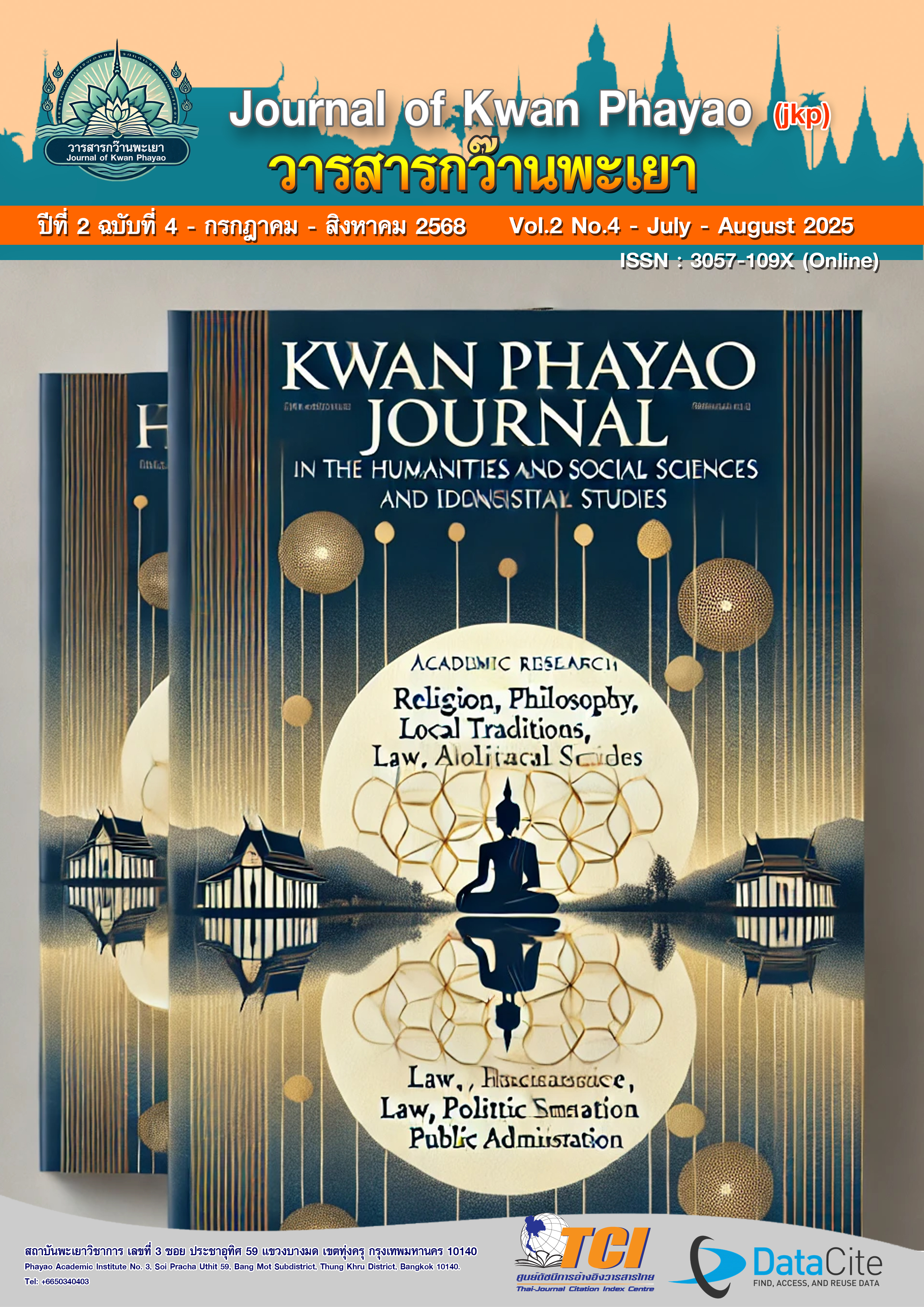THE ROLE OF ONLINE SOCIAL NETWORKS IN DRIVING DIGITAL DEMOCRACY
Keywords:
Social media, Digital democracy, Political participation, Fake news, Public sphereAbstract
This article examines the role of social media networks in driving democracy in the digital era, focusing on the mechanisms and impacts across political, social, and cultural dimensions. Social media platforms serve as a new public sphere where citizens can exchange opinions, monitor state power, mobilize resources for political movements, and cultivate strong digital citizenship. The positive impacts include enhancing political participation, broadening information access, and promoting transparency and accountability. However, negative impacts emerge, such as the spread of fake news, political polarization, and domination by the state or powerful corporations. Case studies from Thailand, the Arab Spring, and the Hong Kong Protests demonstrate that while social media networks possess transformative potential for democracy, outcomes largely depend on political structures and levels of state control in each context. The article proposes key policy recommendations: establishing mechanisms to safeguard digital rights, strengthening media literacy, developing balanced legal frameworks, and fostering cooperation among the state, private sector, and civil society. These strategies aim to ensure that social media networks serve as a constructive force in promoting sustainable democracy.
References
Allcott, H., & Gentzkow, M. (2017). Social media and fake news in the 2016 election. Journal of Economic Perspectives, 31(2), 211–236.
Bertot, J. C., Jaeger, P. T., & Grimes, J. M. (2010). Using ICTs to create a culture of transparency: E-government and social media as openness and anti-corruption tools for societies. Government Information Quarterly, 27(3), 264–271.
Castells, M. (2012). Networks of outrage and hope: Social movements in the Internet age. Polity Press.
Chadwick, A. (2013). The hybrid media system: Politics and power. Oxford University Press.
Dahlberg, L. (2011). Re-constructing digital democracy: An outline of four ‘positions’. New Media & Society, 13(6), 855–872.
Freedom House. (2022). Freedom on the Net 2022. Freedom House.
Fuchs, C. (2014). Social media: A critical introduction. Sage.
Habermas, J. (2006). Political communication in media society: Does democracy still enjoy an epistemic dimension? The impact of normative theory on empirical research. Communication Theory, 16(4), 411–426.
Kurbalija, J. (2016). An introduction to Internet governance (7th ed.). DiploFoundation.
Livingstone, S. (2014). Developing social media literacy: How children learn to interpret risky opportunities on social network sites. Communications, 39(3), 283–303.
Loader, B. D., Vromen, A., & Xenos, M. (2014). The networked young citizen: Social media, political participation and civic engagement. Information, Communication & Society, 17(2), 143–150.
MacKinnon, R. (2012). Consent of the networked: The worldwide struggle for Internet freedom. Basic Books.
Sinpeng, A. (2021). Opposing democracy in the digital age: The yellow shirts in Thailand. University of Michigan Press.
Sunstein, C. R. (2017). #Republic: Divided democracy in the age of social media. Princeton University Press.
Tufekci, Z. (2017). Twitter and tear gas: The power and fragility of networked protest. Yale University Press.
United Nations. (2016). Report of the Human Rights Council on the promotion, protection and enjoyment of human rights on the Internet. United Nations General Assembly.
Bennett, W. L., & Segerberg, A. (2012). The logic of connective action: Digital media and the personalization of contentious politics. Information, Communication & Society, 15(5), 739–768.
Chadwick, A. (2013). The hybrid media system: Politics and power. Oxford University Press.
Coleman, S., & Blumler, J. G. (2009). The Internet and democratic citizenship: Theory, practice and policy. Cambridge University Press.
Dahlberg, L. (2001). The Internet and democratic discourse: Exploring the prospects of online deliberative forums extending the public sphere. Information, Communication & Society, 4(4), 615–633.
Dahlberg, L. (2011). Re-constructing digital democracy: An outline of four ‘positions’. New Media & Society, 13(6), 855–872.
Habermas, J. (1989). The structural transformation of the public sphere: An inquiry into a category of bourgeois society. MIT Press.
McNair, B. (2011). An introduction to political communication (5th ed.). Routledge.
Papacharissi, Z. (2002). The virtual sphere: The Internet as a public sphere. New Media & Society, 4(1), 9–27.
Wasserman, S., & Faust, K. (1994). Social network analysis: Methods and applications. Cambridge University Press.



